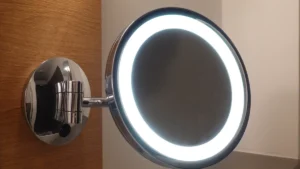
When picking LED strip lights, it’s important to understand the two main types. Constant current LED strip lights maintain a consistent electrical current flow, while constant voltage lights rely on a steady voltage supply. This distinction affects their operation and compatibility with your setup. Choosing the wrong type may lead to dim spots or a shorter lifespan, and it could even damage the lights. By understanding these types, you can select the right one, ensuring your constant current LED strip lights function effectively and last longer.
Key Takeaways
Constant current LED strips give steady light over long areas. They work well for stores and safety lighting.
Constant voltage LED strips cost less and are flexible. They are great for DIY projects and decorations.
Picking the right LED driver is very important. Constant current drivers keep light even and protect LEDs. Constant voltage drivers are simpler to set up.
Think about your project, money, and setup difficulty when choosing.
To get the best results, match the driver to the strip’s needs.
Constant Current LED Strip Lights
Definition and Working Principle
Constant current LED strip lights keep the electrical current steady. This happens even if the voltage changes. An integrated chip (IC) controls the current flow. It ensures the LEDs get safe and stable power. Unlike constant voltage systems, the voltage in constant current systems can change. This change happens within limits to meet the LEDs’ needs.
Specification | Description |
|---|---|
Current Regulation | Current stays steady; voltage adjusts within safe limits. |
Integrated Chip (IC) | The IC manages and limits current to the LEDs. |
Safe Current Levels | Protects LEDs from too much power and allows longer runs. |
Typical Run Length | Can range from 16 feet to 32-98 feet, based on the strip. |
These strips usually work with a set current output, measured in milliamperes (mA) or amperes (A). The voltage range depends on the constant current LED driver. Using the right driver is important for the best performance.
Benefits of Constant Current LED Strip Lights
Constant current LED strip lights have many advantages. They are popular for various uses. One big benefit is their even brightness across the strip. This works even over long distances. It removes dim spots and gives smooth lighting. The integrated chips also save energy by using less power. This is great for commercial projects.
Benefit/Metric | Description |
|---|---|
Maximum Run Length | Longer runs mean fewer wires, making setup easier. |
Consistent Brightness | Chips ensure even light across the strip. |
Reduced Project Costs | Fewer parts lower costs for big installations. |
Energy Efficiency | Uses less power, making it better for the environment. |
Fewer extra parts are needed, which lowers costs. Longer strip lengths make installation easier. This makes them a smart and affordable choice for big lighting projects.
Common Applications
Constant current LED strip lights can be used in many ways. They are often used in hallways to give steady light. This improves safety and visibility. For crown molding and cove lighting, they add a soft glow. This highlights designs without creating bright spots.
Corridors and Hallway Lighting: Gives steady light for better safety and visibility.
Crown Molding Lighting: Adds a soft glow to highlight designs.
Cove Lighting: Provides even light, improving ambiance without bright spots.
Safety Stair Tread and Step Marking: Makes steps safer by improving visibility in dim areas.
Toe Kick Lighting: Adds style and helps people see in dark spaces.
These uses show how flexible and reliable constant current LED strip lights are. They are a great option for homes and businesses.
Role of Constant Current LED Driver
A constant current LED driver is very important. It keeps the current steady for LED strip lights. Even if voltage or load changes, it stays stable. This helps keep the brightness even and protects the LEDs from harm.
Constant current LED drivers are key parts of LED systems. They make sure LEDs get a steady flow of current. This steadiness helps LEDs work well and last longer. If the current changes too much, LEDs might flicker, lose efficiency, or break early.
These drivers are great for powerful lighting setups. They stop “thermal runaway,” where heat makes the current rise and harms the LEDs. By keeping the current stable, they make LED lights more reliable and last longer.
Some benefits of constant current LED drivers are:
Perfect for strong lighting systems.
Keeps light even, especially for LED strips.
Stops overheating, making the system safer.
Constant current LED drivers also make setup easier. You don’t have to worry about voltage dropping over long LED strips. This ensures the light stays even everywhere. Whether for a business or home, the driver helps LEDs work better and last longer.
Picking the right constant current LED driver is important. It helps your LED strip lights work their best. This small part ensures steady performance and protects your LED investment.
Constant Voltage LED Strip Lights
Definition and Working Principle
Constant voltage LED strip lights use a steady voltage, like 12V or 24V. Unlike constant current lights, the current changes based on the load. To stop LEDs from burning out, resistors or current-limiting parts are added. These parts control the current, keeping the LEDs safe.
Voltage stays steady, but current changes with the load.
Resistors protect LEDs by controlling the current flow.
The power supply must match the strip’s voltage to work well.
When setting up constant voltage LED strip lights, check the power supply. If the voltage doesn’t match, the lights may not work or could get damaged.
Benefits of Constant Voltage LED Strip Lights
Constant voltage lights have many benefits, making them popular. They are affordable and easy to use, great for DIY or big projects.
Benefit | Description |
|---|---|
Design Flexibility | Fits into many setups and layouts easily. |
Affordability | Costs less to make than constant current lights. |
Higher Lumen Output | Gives bright light for spaces needing strong lighting. |
Compatibility with Dimmers | Works well with dimmable power supplies and wall dimmers. |
These lights give bright light, perfect for areas needing strong illumination. They also work with dimmers, letting you change brightness as needed.
Common Applications
Constant voltage LED strip lights are flexible and easy to install. They work well in homes and businesses.
Under-Cabinet Lighting: Makes kitchens look better and easier to use.
Accent Lighting: Highlights special designs or decorations.
Retail Displays: Brightly lights up products for better display.
Outdoor Lighting: Great for patios, decks, or garden paths.
These uses show how constant voltage LED strip lights can improve spaces. Whether for home upgrades or store designs, they are reliable and budget-friendly.
Role of Constant Voltage LED Driver
A constant voltage LED driver is very important for LED strips. It gives a steady voltage, usually 12V or 24V. This matches what constant voltage LED strips need. The steady power stops flickering and protects LEDs from damage.
These drivers can handle changes in current needs. If you add more LEDs or make the strip longer, the current adjusts. The voltage stays the same. This makes them great for setups where strips may change.
Tip: Pick a driver with more power than your LED strip needs. This helps it work well and stay cool.
Constant voltage drivers are easy to install. They work with dimmers, so you can adjust brightness. This makes them perfect for under-cabinet or accent lighting. Their simple design also lowers setup mistakes. Both pros and DIY users like them.
Make sure the driver matches your LED strip’s voltage. Using the wrong one can cause uneven light or damage. The right driver helps your lights last longer and shine evenly.
Comparing Constant Current and Constant Voltage LED Strip Lights
Electrical Design and Operation
Constant current and constant voltage LED strip lights work differently. Constant current systems use integrated chips to keep the current steady. This happens even if the voltage changes. Constant voltage systems, however, keep the voltage fixed. They use resistors or other parts to control the current.
Feature | Constant Voltage | Constant Current |
|---|---|---|
Voltage Regulation | Fixed voltage, current limited by resistors | Current controlled by integrated chips |
Maximum Run Length | Shorter, limited by voltage drop | Longer, can extend much farther |
Design Flexibility | High, fits into many setups | Moderate, fewer extra parts needed |
Lumen Output | Higher, good for bright spaces | Lower, not ideal for task lighting |
Dimming Compatibility | Works with standard dimmers | Needs PWM dimming |
Installation Complexity | Harder due to voltage drop issues | Easier, fewer parts required |
Constant current systems are great for keeping brightness even over long strips. Constant voltage systems are better for flexible designs. Choose based on your project needs.
Performance and Efficiency
Constant current LED strip lights are more efficient and last longer. A constant current LED driver keeps the current steady. This reduces wear on the LEDs and makes them last longer. It also prevents uneven brightness, which is helpful for powerful lighting setups.
Feature | Constant Current Driver | Constant Voltage Driver |
|---|---|---|
Efficiency | High | Lower |
Brightness Consistency | Keeps brightness even | May have uneven brightness |
Use Cases | High-power LEDs | Street lighting, LED strips, etc. |
Constant Current Driver Pros:
High efficiency and even brightness.
Protects LEDs from burning out early.
Constant Voltage Driver Pros:
Easy to set up and flexible.
Keeps working even if one LED fails.
If you want efficiency and steady lighting, pick constant current systems. For simpler or cheaper setups, constant voltage systems work well.
Installation and Maintenance
Installing and maintaining these systems is different. Constant voltage LED strip lights need careful planning. Voltage drops can happen on long strips. You might need extra parts like amplifiers to keep brightness even.
Constant current systems are easier to install. A constant current LED driver removes the need for extra parts. It keeps brightness even across the strip. Maintenance is simpler since it avoids problems like overheating or flickering.
Tip: Always match your LED driver or power supply to your LED strip’s needs. This helps them work better and last longer.
For easy installation and low maintenance, constant current systems are best. But constant voltage systems are good for DIY projects or flexible designs.
Cost Considerations
When choosing between constant current and constant voltage LED strip lights, cost is important. Each type has money-saving benefits based on your project needs.
Constant current LED strip lights cost more at first. They use advanced technology like integrated chips and special drivers. These features keep brightness steady and save energy, lowering future costs. For big projects, they need fewer extra parts like amplifiers. This reduces setup costs. Their ability to stay bright over long distances also means fewer power supplies are needed. This makes them a smart choice for large lighting setups.
Constant voltage LED strip lights are cheaper upfront. Their simple design and low production costs make them great for tight budgets. They allow flexible designs without spending too much. But for longer strips, you might need extra parts like amplifiers to fix voltage drops. This can raise the total cost, especially for bigger projects.
Market trends show constant current systems are popular for their efficiency and dependability. However, constant voltage systems are becoming more common because they are easy to use and versatile. If saving energy and money over time matters most, constant current LED strip lights are better. For smaller or creative designs, constant voltage systems are a budget-friendly option.
Tip: Think about all costs, like setup, upkeep, and energy use, when deciding. This helps you pick the best and most affordable option for your project.
Choosing the Right LED Strip Light
Factors to Consider
Application Type
The purpose of your project decides the LED strip type. For long, even lighting, use constant current LED strips. They keep brightness steady, great for commercial spaces or designs. For flexible or decorative setups, constant voltage strips allow more creativity.
Budget Constraints
Your budget affects your choice between the two systems. Constant voltage strips cost less upfront, good for small projects. Constant current strips save money over time by using less energy and lasting longer.
Brightness and Color Consistency
For even brightness across long strips, pick constant current systems. They stop dimming at the strip’s end. If slight changes are okay, constant voltage strips give enough brightness and color balance.
Installation Complexity
Think about how hard it is to install. Constant current systems are easier since they don’t need extra parts like amplifiers. Constant voltage systems may need more planning to fix voltage drops on long strips.
Tip: Match your LED power supply to the strip’s needs to avoid problems.
Examples of Suitable Scenarios
Best Uses for Constant Current LED Strip Lights
Constant current strips are great for steady brightness and long runs. Use them for:
Lighting in commercial buildings.
Cove lighting in big areas.
Safety lighting for stairs or pathways.
Best Uses for Constant Voltage LED Strip Lights
Constant voltage strips are ideal for flexible and low-cost projects. They work well for:
Kitchen under-cabinet lighting.
Accent lighting for home décor.
Outdoor lighting for patios or gardens.
Note: Use dimmable LED drivers with constant voltage strips for better dimming and ambiance.
Knowing the difference between constant current and constant voltage LED strips is important. Constant current strips give steady brightness and save energy. Constant voltage strips are cheaper and more flexible. Pick based on your project, budget, and needs.
Steps to Pick the Right System:
Find out your LED’s voltage and current needs.
Use dimmable drivers if you want to adjust brightness.
Ask a lighting expert for advice if unsure.
Picking the right system helps your lights work well and saves money.
FAQ
What is the main difference between constant current and constant voltage LED strip lights?
Constant current LED strips keep the current steady. Constant voltage LED strips use a fixed voltage. This affects how they work, their efficiency, and driver compatibility.
Can I use a constant voltage LED driver with constant current LED strips?
No, you can’t. Constant current LED strips need a driver that controls current. Using a constant voltage driver can harm LEDs or cause uneven light.
How do I choose the right constant voltage LED driver for my project?
Match the driver’s voltage to your LED strip (like 12V or 24V). Make sure it has enough wattage for the whole strip. Pick a driver with slightly more wattage for safety.
Are constant voltage LED strip lights dimmable?
Yes, they are. Use a dimmable constant voltage driver and a dimmer switch. This lets you easily change the brightness.
Which type of LED strip light is better for long installations?
Constant current LED strips are best for long setups. They keep brightness even over long lengths without needing extra parts.



